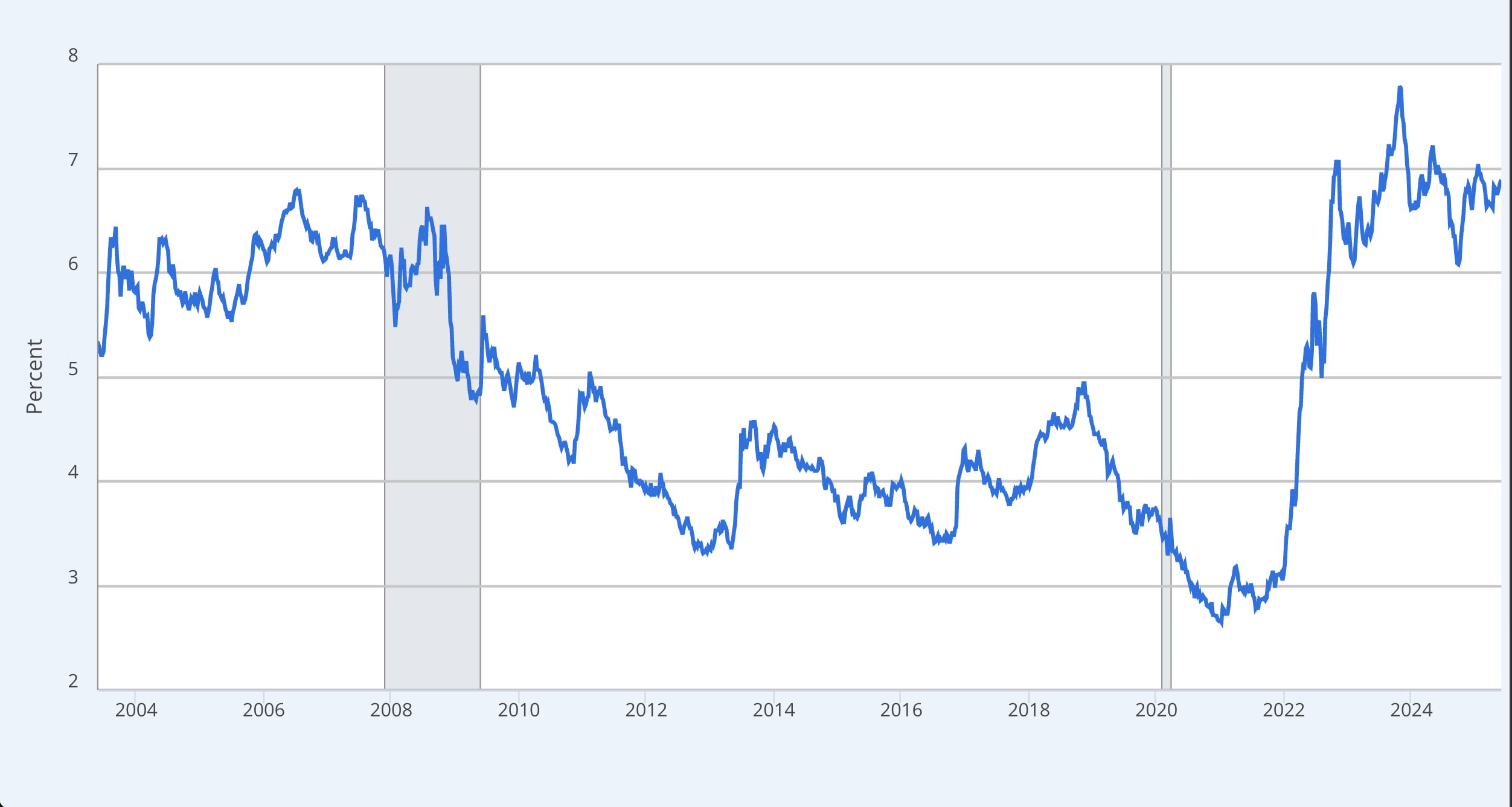How Interest Rates Affect the Housing Market: A Guide for Home Sellers in Texas
In this article, you'll learn how rising or falling interest rates, driven by Federal Reserve policy, can directly affect buyer demand, your home's time on the market to source a buyer, and how much you walk away with at closing.
If you're planning to sell your home in Austin, San Antonio, Houston, or anywhere in Central Texas, understanding the connection between mortgage rates and buyer behavior is essential. You don't need a background in economics—just a few key insights to help you understand market conditions, price the property effectively for the market conditions and prepare for what to expect in today's market.
Why Interest Rates Matter to Sellers
At the top of the economic pyramid is the Federal Reserve—the central bank that controls U.S. monetary policy. One of its most powerful tools is the federal funds rate, which is the interest rate banks charge one another for overnight lending (the wholesale cost of borrowing money).
While this rate may seem far removed from your home sale, it sets off a chain reaction. It has a significant influence on longer-term rates, including the 30-year mortgage rate, which is what most homebuyers use when financing their purchase.
Why the Fed Adjusts Rates (And What That Means for You)
The Federal Reserve raises or lowers interest rates to maintain economic balance. The goals include:
- Controlling inflation: Raising rates helps cool off an overheated economy.
- Encouraging growth: Lowering rates makes borrowing cheaper to stimulate investment and spending.
These decisions are made several times each year and have a direct impact on your pool of potential buyers.
Mortgage Rates and Buyer Activity
Most buyers purchase a home using a mortgage, which means interest rates directly affect what they can afford. When rates are low, monthly payments are more manageable, and more people enter the market. When rates rise, our buyer pool shrinks.
The Impact of Mortgage Rates to You as a Seller
Let's say you're selling a home for $600,000.
- At a 4% mortgage interest rate, a buyer's estimated monthly principal and interest payment is about $2,865.
- At a 7% interest rate, that same home would cost the buyer approximately $3,991 per month.
That's a difference of over $1,100 per month!
When mortgage rates are elevated, buyers often reduce their home search budget, which puts downward pressure on home prices.
Remember, when mortgage rates rise:
- Fewer buyers qualify for loans
- Many buyers reduce their price budget
- Buyer demand decreases
Consumer Confidence and the Economy
Interest rates are closely tied to consumer confidence, which is a measure of how secure buyers feel about their financial future. If rates rise quickly and news headlines discuss a looming recession or job layoffs, buyer confidence can drop significantly overnight.
For home sellers, this means:
- More cautious buyers
- Fewer showings
- Longer time to sell
However, when consumer confidence is high and rates are falling, buyers are more eager to act, leading to stronger demand for homes listed for sale and full-price offers—sometimes multiple offers and bidding wars.
Job Growth and Affordability in Texas
Local job markets also influence housing demand. Texas cities like Austin, San Antonio, and Houston have experienced strong job growth over the past decade, especially in sectors like tech, health care, and energy.
However, if local layoffs occur or if rising interest rates are combined with weaker employment, buyer confidence can decline. On the other hand, increasing wages and employment growth can counteract the impact of rising rates by giving buyers more purchasing power.
What to Watch When Planning to Sell
To stay ahead of the market, home sellers should pay attention to:
- Mortgage rate trends (especially the 30-year fixed rate)
- The Fed's rate announcements (about 8 times per year)
- Job reports and unemployment data for Texas
- Consumer confidence indexes
- Local inventory levels (how many homes are on the market)
By understanding how these factors influence buyer behavior, you can make informed decisions about when to list your home and how to price it effectively.
Tips for Selling in Today's Market
Here's how Central Texas sellers can prepare in a shifting interest rate environment:
1. Work With a Realtor Who Understands the Market
An experienced local agent will help you:
- Understand current buyer demand
- Price your home strategically based on the latest interest rate impact
- Talor marketing that highlights your home's unique features
2. Be Strategic With Pricing
When rates rise, affordability falls. Pricing your home based on today's buyer power—not last year's comps—can help you avoid price reductions and keep your home from sitting on the market too long.
3. Consider Offering Buyer Incentives
If the market is a buyer's market or if your home listing is sitting on the market, consider these high-impact incentives that are more impactful than larger list price changes:
- Offer a closing cost credit to help buyers cover loan fees
- Consider paying for a temporary interest rate buydown
- Include items like appliances or warranties to stand out
These incentives can positively impact a buyer's decision to make an offer on your home.
Final Thoughts
Interest rates are a key part of today's real estate equation. They impact not just buyer affordability but also demand, pricing strategy, and time on the market.
As a home seller in Austin, Houston, San Antonio, or anywhere in Central Texas, understanding how mortgage rates influence buyer behavior can give you an edge in a competitive market.
Work with a knowledgeable real estate broker, stay informed about the market, and remain mindful of your pricing and negotiation approach. You'll be better positioned to sell for top dollar—no matter which way mortgage interest rates are heading.




